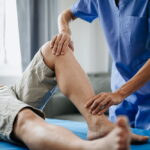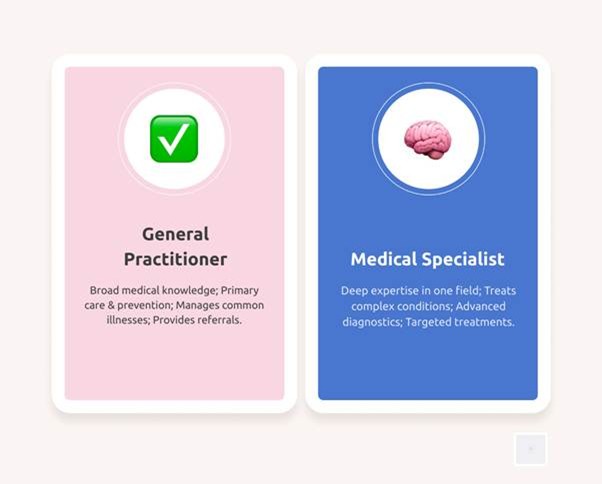The Shift Toward Prevention Healthcare is changing direction. Instead of reacting to illness, more people are focusing on how to stay healthy in the first place. Preventative care has become one of the biggest global health trends of the decade. According to the World Health Organization, 60% to 80% of chronic diseases could be prevented […] The post The Rise of Preventative Care: Why Osteopathy Fits the Moment appeared first on Healthcare Business Club.
The Shift Toward Prevention
Healthcare is changing direction. Instead of reacting to illness, more people are focusing on how to stay healthy in the first place. Preventative care has become one of the biggest global health trends of the decade. According to the World Health Organization, 60% to 80% of chronic diseases could be prevented through early action, lifestyle changes, and proactive care.
It’s not hard to see why this shift is happening. The cost of chronic disease is rising. People are living longer but not always healthier. The focus is turning from emergency fixes to everyday maintenance. Patients want care that looks at them as whole people—not just a diagnosis.
That’s exactly where osteopathy fits in.
Why Preventative Care Works
Preventative care isn’t just about screenings or check-ups. It’s about understanding how the body functions as a system. When one part of that system stops working properly, it can create a chain reaction. Fixing those small issues early can stop bigger ones from developing.
Osteopathy takes this idea and runs with it. The approach is built around balance, structure, and self-regulation. It sees the body as a network of moving parts, each influencing the others. When the body is aligned and moving freely, it functions better and stays healthier longer.
One osteopathic practitioner shared an example of a patient who came in for recurring shoulder pain. “It wasn’t really about the shoulder,” they said. “The problem started in the ribs. Fixing that stopped the tension from returning.” That’s preventative care in action—spotting the early signs before they become long-term problems.
How Osteopathy Fits the Preventative Model
The Canadian Academy of Osteopathy has been teaching this philosophy for years. Students there learn how to look beyond symptoms and find root causes. Their training includes deep anatomical study and hundreds of hours of hands-on clinical work.
The idea is simple: when you understand how the body’s systems connect, you can support its natural ability to heal itself.
This approach is gaining traction as more patients grow frustrated with short appointments and prescription-heavy treatments. People want personalised, holistic care that feels proactive instead of reactive. Osteopathic manual practitioners are filling that gap.
A 2023 Canadian health survey found that over half of adults use at least one form of complementary therapy, with osteopathy among the fastest-growing choices. That growth reflects a broader shift in how people think about health—less about crisis management, more about everyday wellbeing.
What Practitioners Can Learn from Preventative Thinking
Healthcare practitioners, regardless of discipline, can apply osteopathic principles to their own work. It starts with observation.
- Listen longer. Take time to understand how a patient’s daily habits, stress, and posture influence their symptoms.
- Look for connections. Pain in one area might begin somewhere else entirely.
- Educate patients. Help them understand what’s happening in their bodies and what they can do between visits.
- Focus on function. Improving how the body moves often prevents recurring problems.
These steps may seem basic, but they change everything. A practitioner who looks at the whole person instead of just the diagnosis can often prevent future issues instead of just managing current ones.
What Patients Can Do to Prevent Problems Early
You don’t need to be a professional to think preventatively. There are simple habits anyone can start right now:
- Move daily. Motion keeps joints healthy and improves circulation. Even short walks count.
- Pay attention to posture. The way you sit, stand, and work affects your structure more than you realise.
- Notice patterns. Keep a short note of pain, fatigue, or tension. Trends reveal small problems before they grow.
- Manage stress. Chronic stress tightens muscles and disrupts natural movement. Breathing, stretching, and downtime all help.
- Get regular check-ins. Seeing an osteopath, physiotherapist, or other manual practitioner even when you’re not in pain can catch early imbalances.
One patient described how preventative treatment changed her routine. “I used to wait until I was hurting to book an appointment,” she said. “Now I go once every few months. My migraines and back pain almost never come back.”
The Cost of Waiting Too Long
Preventative care isn’t just about feeling good—it’s about saving money and reducing long-term risk. In Canada, chronic diseases account for nearly 70% of healthcare spending. Much of that cost comes from conditions that could have been managed earlier.
When patients wait until pain or dysfunction becomes severe, recovery takes longer and treatment becomes more expensive. Preventative osteopathy, by contrast, focuses on small adjustments that keep the system running smoothly. It’s like performing maintenance on a car—fixing small issues before they turn into breakdowns.
The Broader Impact on Healthcare
The preventative care movement could reshape healthcare itself. If more practitioners adopt whole-body, proactive thinking, fewer patients would need emergency interventions. It could reduce the burden on hospitals, improve public health outcomes, and build trust between patients and providers.
Osteopathic training already models this shift. Students learn to question assumptions, connect anatomy with physiology, and apply logic to each case. The future of healthcare education may depend on this kind of reasoning. Instead of producing technicians who follow rules, schools need to build thinkers who adapt and solve.
As one instructor put it, “We don’t teach people to memorise. We teach them to think—and thinking is what prevents disease.”
Taking the Next Step
Preventative care is here to stay. It’s practical, sustainable, and rooted in common sense. The key is to make it part of everyday life—for practitioners, educators, and patients alike.
- Start small. Prevention doesn’t need to be complicated. Build awareness of how your body feels and functions.
- Seek balance. Health isn’t just the absence of pain—it’s the presence of movement, alignment, and comfort.
- Stay curious. Ask questions about how your body works. Learning about yourself is the best form of prevention.
The rise of preventative care shows that people are ready for change. They’re ready for a system that teaches health, not just treats sickness. And as osteopathy continues to grow, it’s proving that sometimes the best medicine is understanding how to keep the machine running before it breaks.
Because in the end, prevention isn’t only the future of healthcare—it’s the foundation of a healthier life.
Read Also
- The Rise of Preventative Care: Why Osteopathy Fits the MomentThe Shift Toward Prevention Healthcare is changing direction. Instead of reacting to illness, more people are focusing on how to stay healthy in the first place. Preventative care has become one of the biggest global health trends of the decade. According to the World Health Organization, 60% to 80% of chronic diseases could be prevented… Read more: The Rise of Preventative Care: Why Osteopathy Fits the Moment
- A Guide to Specialized Healthcare: Experts in Addiction Recovery, Orthopedics, and Cosmetic SurgeryIntroduction to Specialized Healthcare Finding the right expertise is crucial when facing health challenges. General care is important, but sometimes, you need a deeper level of knowledge. Specialized healthcare can offer more precise solutions and better results. It means connecting with experts who focus on specific areas of medicine. Navigating the healthcare system can be… Read more: A Guide to Specialized Healthcare: Experts in Addiction Recovery, Orthopedics, and Cosmetic Surgery
- When Health Care Feels Personal Again — The Clinic Model That’s Making a Difference in WilmingtonWhen your doctor remembers your name, something shifts. Health care feels impersonal for many: crowded clinics, brief visits, and records that don’t connect people to consistent care. In Wilmington, community clinics pair patients with steady teams and shared records so appointments build on what came before. Those clinics are bringing physical and mental health into… Read more: When Health Care Feels Personal Again — The Clinic Model That’s Making a Difference in Wilmington
- Cellular Tissue Allografts for Regenerative Healing SupportHave you ever wondered how the body can naturally restore damaged tissue and speed up recovery? Medical science has advanced to harness this remarkable ability through innovative biological therapies. Among these, cellular tissue allografts are emerging as a key method in regenerative healing. These grafts use naturally derived materials to promote repair at a cellular… Read more: Cellular Tissue Allografts for Regenerative Healing Support
- Balancing Mobility and Comfort with Chiropractic ScienceSetting the Stage for Spinal Wellness The spine is your structural command center. Without it, mobility collapses and comfort erodes one vertebra at a time. Modern work habits grind it down: hours hunched at a desk, eyes locked to screens, bodies repeating the same micro-movements until muscles rebel. This chronic strain bleeds into productivity, mood,… Read more: Balancing Mobility and Comfort with Chiropractic Science
- Discover Comfortable Assisted Living Options for SeniorsGrowing older brings changes, but it also opens doors to new beginnings. For many seniors, it’s a time to trade the stress of upkeep and isolation for peace, safety, and connection. Assisted living isn’t about giving up independence-it’s about gaining support that allows life to be enjoyed fully, without worry. Finding the right place means… Read more: Discover Comfortable Assisted Living Options for Seniors
- From Silence to Support: Mental Health in Older GenerationsDid you know that some adults aged 65 and older feel very sad or worried, just like younger people do? Many of them keep these feelings to themselves and don’t ask for help. This can make them feel even more alone. Sometimes, people are afraid to talk about mental health because they think others won’t… Read more: From Silence to Support: Mental Health in Older Generations
- Healthy Living Tips Every Senior Should Know for VitalityGrowing older brings new ways to enjoy life with balance and grace. Every choice made each day can shape how strong and lively one feels. Simple changes can lead to a brighter, more active lifestyle. Health at any age is about keeping the body and mind connected. It’s about living each day with purpose, ease,… Read more: Healthy Living Tips Every Senior Should Know for Vitality
The post The Rise of Preventative Care: Why Osteopathy Fits the Moment appeared first on Healthcare Business Club.



















